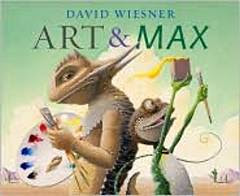
I blame Hollywood. Mama's watched so many pictures that she believes in happy endings. She's been waiting her whole life to find someone who'll sweep her off her feet and take care of her.
Me? I think life's more like that cartoon by Mr. Disney--The Three Little Pigs. Some big bad wolf's always trying to blow down your house.
It's 1935, deep Depression days. Turtle's mama favors Shirley Temple's perky optimism, but Turtle's patron saint is
Little Orphan Annie. Sure, she doesn't have a dog like Sandy, but she has a cat, Smokey, with a singed tail, courtesy of some mean boys, who's just as loyal and just as smart. But despite her pretty mama's ability to find a succession of men friends, all of them love her and leave her, and Turtle has about given up on Daddy Warbucks to come to her rescue.
But just as Mama lands a housekeeping job with a rich lady and hooks up with Archie, a salesman that even Smokey the cat falls for, Turtle's frail hopes for a happy ending fall through again. Her crotchety boss hates kids and Mama decides to send her to live with her estranged family in Key West.
Key West in 1935 is no tourist paradise. Even the thick-skinned Turtle, used to being the bullied and tormented "housekeeper's daughter," finds it less than welcoming. "
Truth is," she thinks, "
the place looks like a broken chair that's been left out in the sun to rot." Her worn and harried Aunt Minnie is not thrilled when she shows up: she already has three raggle-taggle boys, Kermit, Beans, and little Buddy, who is usually missing his pants, and her energy and the family's budget is clearly stretched to the limit already. The boys are no less underwhelmed at the sight of their new girl cousin, but Aunt Minnie makes room for her, and in her aunt's quiet strength and determination Turtle senses a kindred spirit.
So, too, is sponge fisherman Slow Poke, whose grey eyes are strangely like her own, who occasionally hires her as a hand on his boat and who also likes to pretend that the two of them are Terry and Pat from the comic strip
Terry and the Pirates, entertaining her with tales of pirate treasure to be found in the Keys. Reluctantly, the boys begin to allow her to tag along as a non-member on their almost daily rounds as the Diaper Gang.
"We watch of babies," says Kermit. "Bad ones."
"You ever take care of good babies?" I ask.
"Ain't no such thing."
Girls can't belong to the Diaper Gang, but there's one job the boys are glad to give her--feeding lunch to their ancient, disabled, and undeniably mean Nana Philly. Turtle is shocked to learn from her caretaker, Bea, that Nana Philly is her own grandmother and that her mama, newly pregnant ten years before and despairing of her boyfriend's support, was forced to leave Key West by her own mother. Still, Turtle is drawn to the old woman, who despite her habit of throwing her lunch on the floor every time it's offered, seems to hide some family secrets in her shrewd glances. Sticking to the job, Turtle slyly bests the old woman at her own game, finally earning grudging smiles every time she appears.
And it is Smokey who adopts Nana Philly as well and who leads her to an amazing discovery. Hidden in Nana Philly's termite-ridden piano, Turtle discovers something better than Daddy Warbucks' fortune--a gold coin and a crude map which says
This being Where Blacke Caesar putte His Treaffure.
This might just be the key to that happy ending her Mama needs, and Turtle even enlists the Diaper Gang to help commandeer a boat to a tiny nearby key, with nothing but a crumbling cistern, a sagging shack, and, they hope, a marker which will show them where to dig for Black Caesar's pirate gold.
And they do find that marker and many feet below in the sand they find a chest that is indeed filled with gold. But their joy soon turns to terror. Their boat has broken its moorings and they are marooned. Still, the area is a favorite of fishermen and spongers, there is water in the cistern, and they have good reason to hope for a rescue. But then Beans points out the weather signs that have gone unnoticed. A storm is approaching and it looks to be a bad one.
Indeed, it is the historic Labor Day Hurricane of 1935, and this time Turtle is sure that there is no happy ending ahead for her.
Newbery Award-winner Jennifer L. Holms (for
Our Only May Amelia (Harper Trophy Books)
and
Penny from Heaven
) knows how to create crackerjack characters (even a cameo of Papa Ernest Hemingway), each so indelibly drawn that they seem like people you've always known, quirky, imperfect, but fully human. Her impeccable storytelling skills sweep the plot along at what at first appears a leisurely, meandering pace but which draws to a suspenseful climax that seems the mythical happy ending. But like one of Beethoven's symphonies, that false ending is only building to the real resolution, surprising but oh, so satisfying, that is the hallmark of the master storyteller. As the writer for
Kirkus Reviews puts it, Holm's
Turtle in Paradise
(Random House, 2010) is "sweet, funny and
superb." I couldn't say it better.
Labels: Adventure Stories (Girl Protagonist) (Grades 4-7), Family Stories, Florida--Fiction, Historical Fiction, Key West






















